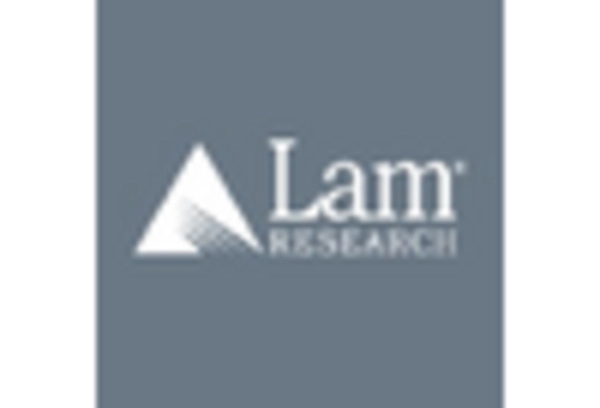Increasing Focus on Quality Control
The increasing focus on quality control within the semiconductor manufacturing sector is a significant driver for the wafer inspection-system market. As competition intensifies, manufacturers are prioritizing quality assurance to minimize defects and enhance product reliability. In 2025, it is projected that companies will allocate approximately 15% of their production budgets to quality control measures, including advanced inspection systems. This trend underscores the importance of implementing robust inspection processes to meet customer expectations and regulatory standards. The wafer inspection-system market is thus poised to benefit from this heightened emphasis on quality, as manufacturers seek to invest in state-of-the-art inspection technologies that ensure compliance and improve overall product performance. Consequently, the demand for sophisticated inspection systems is expected to rise, further propelling market growth.
Rising Demand for Semiconductor Devices
The increasing demand for semiconductor devices across various sectors, including consumer electronics, automotive, and telecommunications, is a primary driver for the wafer inspection-system market. As the complexity of semiconductor manufacturing escalates, the need for precise inspection systems becomes paramount. In 2025, the semiconductor industry in the US is projected to reach a market value of approximately $300 billion, indicating a robust growth trajectory. This surge necessitates advanced inspection systems to ensure quality and reliability, thereby propelling the wafer inspection-system market forward. Manufacturers are compelled to adopt sophisticated inspection technologies to meet stringent quality standards, which further stimulates market growth. The wafer inspection-system market is thus positioned to benefit significantly from this rising demand, as companies seek to enhance their production capabilities and maintain competitive advantages.
Regulatory Compliance and Industry Standards
Regulatory compliance and adherence to industry standards are pivotal drivers for the wafer inspection-system market. As the semiconductor industry faces increasing scrutiny regarding product quality and safety, manufacturers are compelled to implement rigorous inspection processes. In 2025, it is expected that compliance-related expenditures will account for approximately 10% of total production costs in the semiconductor sector. This trend highlights the necessity for advanced inspection systems that can meet stringent regulatory requirements. The wafer inspection-system market is likely to experience growth as companies invest in technologies that ensure compliance with evolving standards. By adopting sophisticated inspection solutions, manufacturers can mitigate risks associated with non-compliance, thereby enhancing their market position and fostering consumer trust.
Expansion of Semiconductor Manufacturing Facilities
The expansion of semiconductor manufacturing facilities in the US is a crucial driver for the wafer inspection-system market. As companies invest in new fabs and upgrade existing ones, the need for advanced inspection systems becomes increasingly apparent. In 2025, it is anticipated that capital expenditures in the semiconductor sector will exceed $50 billion, with a significant portion allocated to enhancing production capabilities. This expansion necessitates the integration of high-performance inspection systems to ensure that manufacturing processes meet the required standards. The wafer inspection-system market stands to gain from this trend, as manufacturers seek to implement cutting-edge technologies that facilitate efficient production and quality assurance. The growth of semiconductor facilities not only drives demand for inspection systems but also fosters innovation within the market.
Technological Advancements in Inspection Techniques
Technological advancements in inspection techniques are significantly influencing the wafer inspection-system market. Innovations such as high-resolution imaging, machine learning algorithms, and real-time data analytics are enhancing the capabilities of inspection systems. These advancements allow for more accurate defect detection and characterization, which is crucial in the semiconductor manufacturing process. In 2025, it is estimated that the adoption of advanced inspection technologies could improve defect detection rates by up to 30%, thereby reducing production costs and increasing yield. As manufacturers strive for higher efficiency and lower operational costs, the wafer inspection-system market is likely to experience substantial growth. The integration of cutting-edge technologies not only improves inspection accuracy but also streamlines the overall manufacturing process, making it a vital driver for the market.
















Leave a Comment